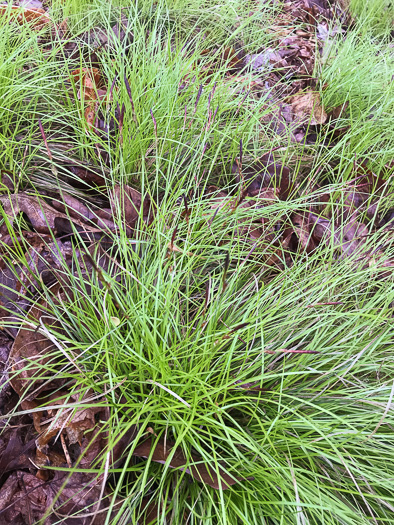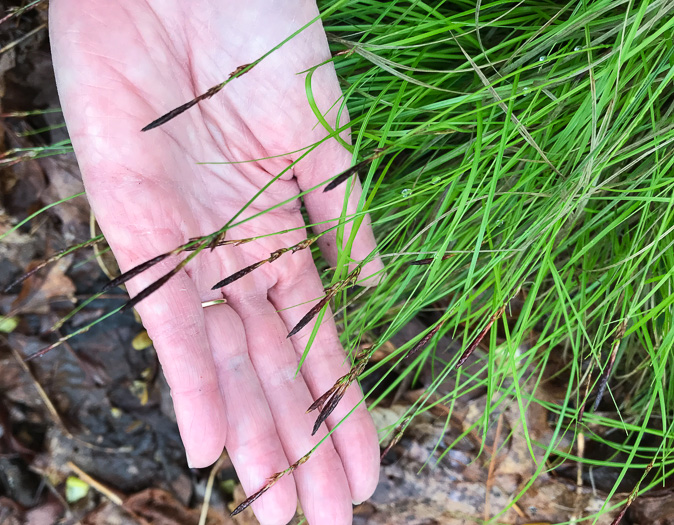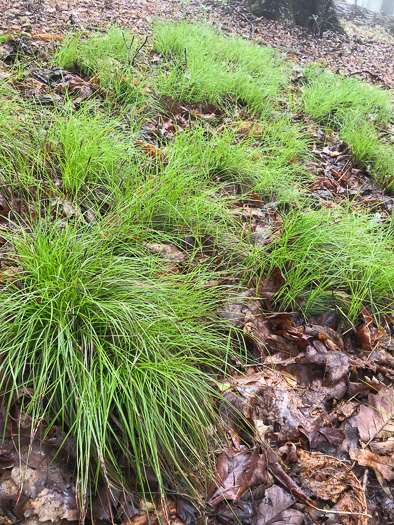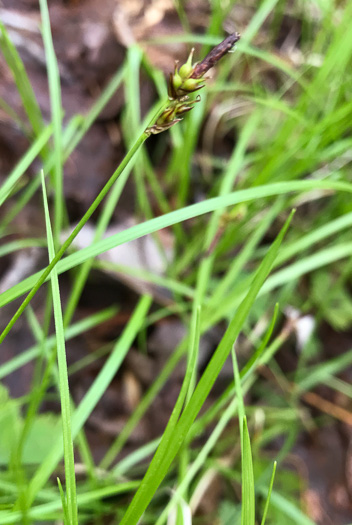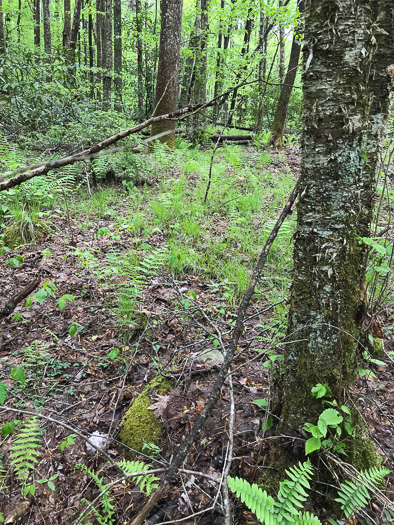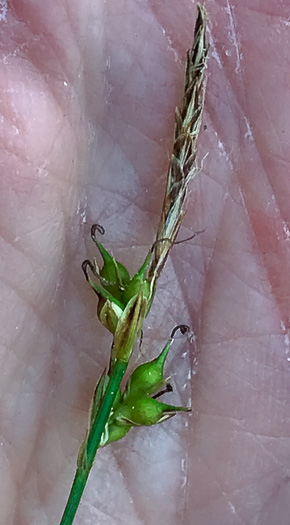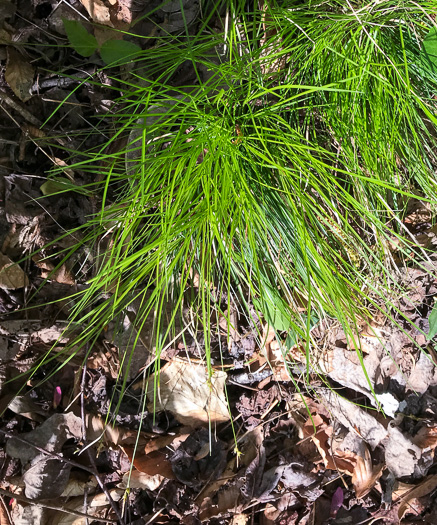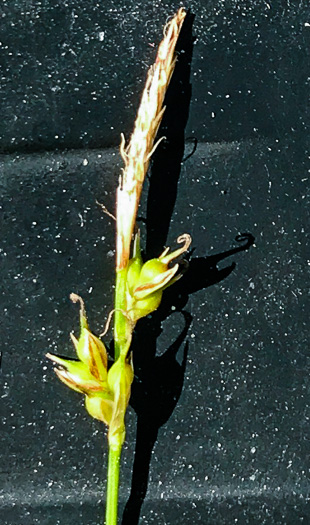Spermatophytes (seed plants): Angiosperms (flowering plants): Monocots: Commelinids: Poales
WEAKLEY'S FLORA OF THE SOUTHEASTERN US (4/24/22):
Carex austrolucorum
FAMILY
Cyperaceae
Go to FSUS key
Dig deeper at SERNEC, a consortium of southeastern herbaria.
Belongs to a challenging group of sedges; experience is necessary for successful identification. Read more at Vascular Plants of North Carolina.
SYNONYMOUS WITH
PLANTS NATIONAL DATABASE:
Carex lucorum var. austrolucorum
FAMILY
Cyperaceae
SYNONYMOUS WITH Taxonomy and geographic distribution of Carex lucorum var. austrolucorum (section Acrocystis, Cyperaceae) (Poindexter & Naczi, 2014)
Carex austrolucorum
SYNONYMOUS WITH Flora of North America north of Mexico, vol. 23 (2002)
Carex lucorum var. austrolucorum
SYNONYMOUS WITH Floristic Synthesis of North America (Kartesz, 1999)
Carex lucorum var. austrolucorum
INCLUDED WITHIN Guide to the Vascular Plants of the Blue Ridge (Wofford, 1989)
Carex pensylvanica
INCLUDED WITHIN (MISAPPLIED AS TO OUR MATERIAL) VASCULAR FLORA OF THE CAROLINAS (Radford, Ahles, & Bell, 1968) 030-17-044b:
Carex pensylvanica var. distans FAMILY Cyperaceae
INCLUDED WITHIN Manual of the Southeastern Flora (Small, 1933, 1938)
Carex lucorum
COMMON NAME:
Appalachian Woodland Sedge
To see larger pictures, click or hover over the thumbnails.
JK Marlow jkm230428_2805
April Greenville County SC
Mountain Bridge Wilderness
Plants with long rhizomes, forming clonal patches, per Weakley's Flora (2022).
JK Marlow jkm230428_2835
April Greenville County SC
Mountain Bridge Wilderness
Widest leaf 1.3-2.3 (-3.7) mm wide; culm nearly smooth, per Weakley's Flora (2025).
JK Marlow jkm250415_2478
April Pickens County SC
Laurel Fork Heritage Preserve
Perigynium beak 1.1-2.4mm long, body glabrous to sparsely pubescent, papillae usually absent, per Weakley's Flora (2025).
JK Marlow jkm250415_2481
April Pickens County SC
Laurel Fork Heritage Preserve
Inflorescences with both staminate and pistillate spikes, per Flora of North America.
WEAKLEY'S FLORA OF THE SOUTHEASTERN US (4/24/22):
Carex austrolucorum
FAMILY
Cyperaceae
SYNONYMOUS WITH
PLANTS NATIONAL DATABASE:
Carex lucorum var. austrolucorum
FAMILY
Cyperaceae
SYNONYMOUS WITH
Taxonomy and geographic distribution of Carex lucorum var. austrolucorum (section Acrocystis, Cyperaceae) (Poindexter & Naczi, 2014)
Carex austrolucorum
SYNONYMOUS WITH
Flora of North America north of Mexico, vol. 23
Carex lucorum var. austrolucorum
SYNONYMOUS WITH
Floristic Synthesis of North America (Kartesz, 1999)
Carex lucorum var. austrolucorum
INCLUDED WITHIN
Guide to the Vascular Plants of the Blue Ridge (Wofford, 1989)
Carex pensylvanica
INCLUDED WITHIN (MISAPPLIED AS TO OUR MATERIAL)
VASCULAR FLORA OF THE CAROLINAS (Radford, Ahles, & Bell, 1968) 030-17-044b:
Carex pensylvanica var. distans
FAMILY
Cyperaceae
INCLUDED WITHIN
Manual of the Southeastern Flora (Small, 1933, 1938)
Carex lucorum
If a search such as "Carex leptalea var. leptalea" doesn't deliver the results you want, try "Carex leptalea".
Or, to minimize chances of a misspelling, try just "Carex le".
Less is more: If "pencil flower" doesn't deliver the results you want, try "pencil".

